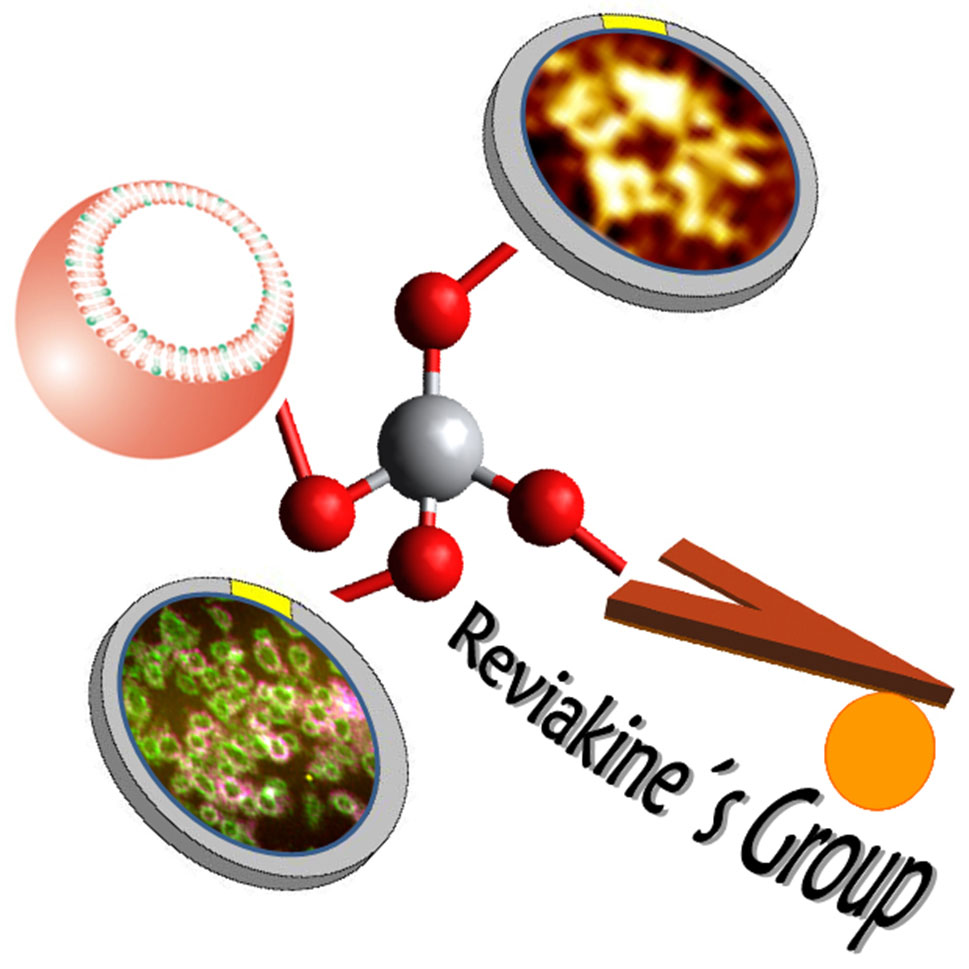|
|
|
Biography |
I received a B.Sc. in biochemistry from McMaster University (Hamilton, Canada) and a Ph.D. in Mathematics and Natural Sciences from the University of Groningen (the Netherlands), working with Prof. Alain Brisson on atomic force microscopy (AFM) of biological macromolecules and their assemblies. In particular, I studied the assembly annexin A5 (formerly annexin V) ordered arrays on supported lipid bilayers (SLBs), as well as mechanisms of SLB formation from liposomes. For the annexin studies, I received the Paper of the Year award from the Journal of Structural Biology.
After the Ph.D., I did a postdoc at the Swiss Federal Institute of Technology (ETH) in Zürich (Switzerland), where I continued working on lipid interactions with artificial materials found in implants, in particular titania (TiO2). TiO2 is thought to confer favorable properties to the widely used titanium implants. That work led to the discovery of the titania-supported asymmetric SLBs containing phosphatidylserine (PS). PS is a phospholipid that is important in blood coagulation, making this phenomenon potentially interesting to the area of material biocompatibility. Indeed, the mechanism by which PS-containing asymmetric SLBs formed on titaia pointed to the role of surface ion exchange in the interactions between artificial materials and biological model systems. (Native cell membranes are also asymmetric with respect to the distribution of this phospholipid, making titania-supported SLBs interesting for cell membrane biophysics studies).
In 2005, after a postdoc on protein crystallization at the University of Houston (Houston, TX, USA), I returned to the work on biointerfaces as the Alexander von Humboldt Research fellow, hosted by Diethelm Johannsmann at the Clausthal University of Technology in Germany. There, I started working on the shear-acoustic response from laterally heterogeneous ultrathin films. That work led to the identification of a new contrast mechanism by which shear resonators used in quartz crystal microbalances sense adsorbed nanoparticles. Later, this allowed me to study adsorbed liposome deformation and so to further advance the understanding of the interactions between lipids and surfaces of artificial materials. It was also a start of a tremendously exciting and fulfilling collaboration that continues to date.
In 2006, I joined CIC biomaGUNE, a new research institute in San Sebastian, Spain, as a groupleader. There, I had a chance to participate in the establishment of a new institute, and to continue my work on the interactions between artificial materials and biological systems ranging from lipids to thrombocytes (platelets) to blood. In particular, my group investigated the role of surface ion exchange in the activation of platelets on TiO2, and worked on the design of a new platelet activation assay based on the analysis of platelet surface glycosylation changes. We showed that platelet activation at biomaterial surfaces could be selective, and that platelet surface glycosylation differed between platelets activated with different agonists, yielding an agonist-specific fingerprint. Platelets are key coagulation effectors (thus the connection with the earlier work on phosphatidylserine) that are also responsible for the adverse reactions to the biomaterials—reactions that lead to the material-induced thrombosis, inflammation, and that can be fatal. I also embarked on neutron reflectometry studies for quantifying the asymmetry in TiO2-supported SLBs and characterizing the interactions between PS and calcium that are crucial to the role of PS in coagulation and its interactions with titania.
In 2013, I moved to the Karlsruhe Institute of Technology (KIT) in Germany to start a group on blood compatibility. There, we designed a single platelet secretion assay and studied platelet activation induced by contact with metallic biomaterials (Ti, CoCr, steel) in whole blood.
The key idea currently driving my research is that based on the regenerative functions of platelets, their controlled activation at biomaterial surfaces can be used to foster implant integration.
My scientific interests include biological surfaces and interfaces, surface analysis under ultra-high vacuum and hydrated conditions, interactions between biological and artificial systems/materials, blood-biomaterial interactions, platelet-biomaterial interactions, platelet activaton, coagulation, wound healing, titania, cell membrane and lipid biophysics.
In my spare time, I hike, camp, bike, ski, drive, and travel.
